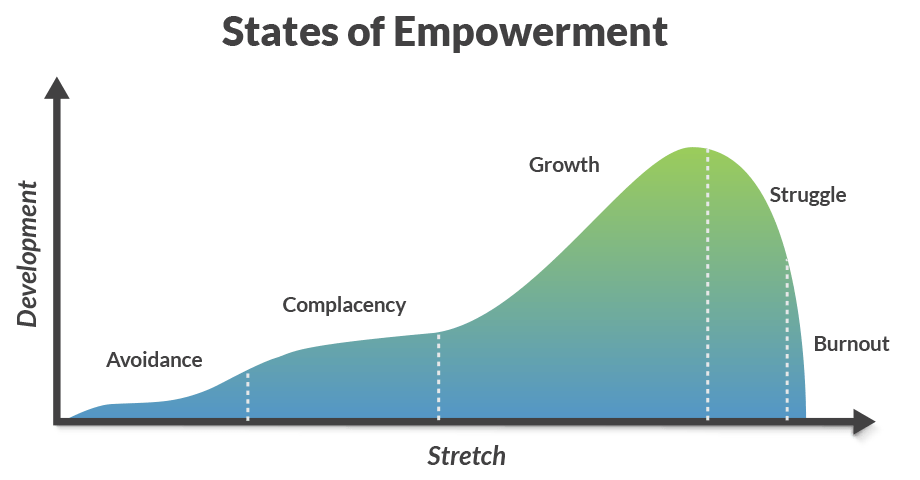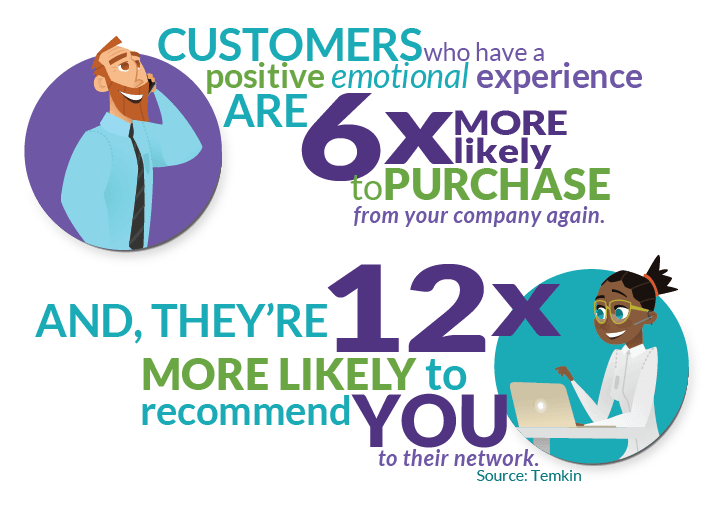
Happy Employees Happy Customers: How to Stop Preaching About Building a People-First Culture in your Contact Center and Start Doing Something About it
New research alert: The stats are in – all this talk about “happy employees, happy customers” isn’t fluff.
In August, Glassdoor released a decade of research linking employee and customer experience. From 2008 to 2018, they studied the connection between reported employee satisfaction levels and CSAT scores on the ACSI index.
In it, they found, investing in your employees has real bottom-line benefits for your business.
“Our findings suggest employers who invest in employee satisfaction and improved workplace culture may enjoy spillover benefits that go beyond talent attraction and retention. Maintaining a satisfied workforce — particularly among customer-facing roles — should be considered a key prerequisite to delivering great customer experiences.”
– Daniel Zhao and Dr. Andrew Chamberlain for Glassdoor
Yet, 74% of contact center agents are still at risk for burnout.
And, more than half of employees who choose to leave a job say their manager or company could have done something to prevent them from leaving.
So, the question is, why didn’t they?
All too often, companies sacrifice pieces of the employee experience in the name of a better CX. Agents suffer in silence, sitting on the brink of burnout, waiting for leaders to take notice. But rather than building a strategy core to the business, companies hold one-off events to boost engagement. They create patch-fixes for an entirely broken experience and expect a complete mind shift and better customer outcomes in return.
The reality is, the employee engagement mind shift has to start at the top. According to Gallup, companies need to think less about making employees happy (cue the pizza party). Instead, they need to go further, building a strategy to engage employees and improve business performance.
[Read Next] Erase the poor call center experience with these 3 management techniques
A well-intentioned strategy with specific initiatives to improve your agents’ overall experience gets more buy-in and support from leaders. Then, the initiatives become sticky, creating a lasting impact for your agents and your customers.
We’re sharing five ways to stop talking about agent happiness and start doing something about it. Something that sticks.
1. Uncomplicate the employee desktop.
Your agents stew in information overload. They surf between an average of 8.6 different applications daily and handle some 130+ interactions. And 72% of employees still can’t find the information they need in their company’s systems.
Not to mention, 57% of the time, their interruptions on the job come from switching among disparate and stand-alone applications. Put simply, your overload of channels and tools are causing agent brain drain. And, those same drained agents can’t just put up a façade and continuously deliver positive experiences for your customers.

How to do it:
Before you tack on yet another technology to your toolset, stop. Think about the goals you need to accomplish in your contact center, first. Then, clean up your processes and see how current tools can support your goals. Make sure your data is clean and your technology is being used to the fullest potential.
Do you have integrations to connect the dots? Can you consolidate data among systems? Do your agents have to go through a maze of applications to help customers? If your tools don’t support your customer goals (and a better agent experience) it’s time to reevaluate.
2. Train your agents. Frequently.
The whopping majority of employees, 96%, think receiving feedback regularly is a good thing. But only 39% of people say they’ve learned something to help them do their jobs better in the last 30 days. Agents who feel stuck in the monotony of daily task work, without progressing themselves, won’t be motivated to give customers standout experiences.
Statistics show, regular training keeps agents engaged, motivated, and in their seats. And, the knowledgeable help these motivated agents deliver determines if your customers have a good service experience (or not).

How to do it:
Condense your training from week-long classroom-style sessions to shorter, more digestible lessons.
Block out a few hours on your calendar each week to dive in on hyper-focused training for your agents. Use in-line training tools to deliver specific and relevant feedback to your agents on their interactions. Automate coaching moments and send microlearning lessons to your agents’ queues.
And, gather context from customer conversations and metrics, and share them with your team. Encourage your agents to ask for the resources they need and take time to develop themselves. It’ll benefit them, your customers, and your company.
[Learn More] Make coaching and easier and less time consuming with Sharpen’s approach to coaching & quality management
3. Connect your team to purpose.
Employees are three times more likely to work for a company with a strong sense of purpose according to research out of Mercer. But a recent Forbes article found only 13% of companies surveyed have an employee value proposition that’s connected to their purpose and mission.
When your agents aren’t connected to the why behind their roles, chances are high they’ll experience learned helplessness. They’ll sit in their seats, throw their headsets on, and take customer calls, chats, or texts. But they won’t be really present while doing it. They’ll follow scripts and protocol. But the emotion behind their conversations will be lackluster at best. And research shows, creating an emotional connection with customers is what builds loyalty.
How to do it:
Create an agent value proposition to drive purpose and meaningful connection in your contact center. What’s your team’s mission? And, how do each of your agents impact it?
In a recent study by Glassdoor, researchers found that companies thrived in both employee satisfaction and customer satisfaction when purpose was tied to giving back to customers. And, when frontline employees were encouraged to interact with customers on a more human level.
Go a step further, and factor in what’s in it for your agents when they whole-heartedly contribute to your mission. Outline what they’ll get it from it, whether it’s a sense of accomplishment, intrinsic motivation, or career progression. Think through how your agent value prop supports your agents’ individual goals and the goals of your company.
4. Shift focus from metrics to outcomes.
Companies labeled by McKinsey & Co as customer-centric organizations rally around customer outcomes above all else. “Customer experience and outcomes are measured, shared and tied to individual performance assessment,” said Gila Vadnai-Tolub.

Metrics are important because they impact customer outcomes. But the truth is, if your average handle time was high or if your customer waited on hold too long, but they left the conversation happy, what does it matter?
In the National Customer Rage Study six of the most common, unmet customer expectations that brewed frustration were about how an agent handled an interaction. Not how fast they handled it.
How to do it:
Create a data strategy and ID metrics to track and KPIs to watch. Explain why each metric matters to your agents. For instance, we know that FCR has a direct correlation to CSAT. For every 1% rise in FCR, there’s a 1% rise in CSAT, too. So, when you’re doubling down on first contact resolution, you’re really doubling down on customer satisfaction at the same time.
Make these connections clear to your team. Talk through the why behind what you choose to measure. And, empower your team to offer unique resolutions to customers – even if it means missing a metric. Empowering agents to think about helping the customer, not just hitting a number, fuels positive experiences with every touchpoint.
[Download Now] Build a data strategy to fuel business intelligence and better customer outcomes
5. Encourage time off.
In the spirit of the holiday season, we’re putting extra emphasis on this one.
More than one-third of employees haven’t taken a vacation (and don’t plan to) in the past year. We wear busy like a badge of honor. But the truth is… everybody needs a vacation. One where we can actually disconnect and enjoy time away from the frenzy of work.
Over-exhausted workers hovering on the brink of burnout aren’t productive or happy. When people don’t have time to step away and unwind, our brains melt and barely guide us through our daily motions. Creativity and problem-solving skills disappear, and we show up to work in a tired haze. That routine isn’t good (or healthy) for anyone, your customers included.
Your agents especially, need time to relax and refresh.
The struggle? More often than not, taking time off requires working double time before (and after) you leave. It’s easier to stay in the office than it is to jump through the hoops required to disconnect. Some 36% of employees in the U.S. say they’ve returned from vacation to find so much work they wish they’d never left at all.
Customers suffer when your agents are stressed out and overworked. Disengaged agents with jam-packed schedules and no time to recharge live in a rightful cloud of negativity. And given that 92% of customers say your agents’ perceived mood affects their customer experience, that cloud of negativity hovers over your customers, too.

How to do it:
Shed the mentality that if agents take vacation, they’re doing something wrong. Time away from work brews happiness and grows a person’s outlook on life. Knock down the barriers your agents have to take a real break from their roles.
Work to offload some of their tasks to other team members when they leave. Change your routing rules so calls and texts don’t forward to their voicemails, leaving them overwhelmed when they return.
During your 1:1s, review vacation time with your agents. If Jessica hasn’t taken a day off in six months, reassure her it’s okay to take time for herself. Being more open and transparent about PTO will build trust and encourage your team to take much needed breaks.
[Read Now] Connect your agents to their roles and drive higher engagement in your contact center

